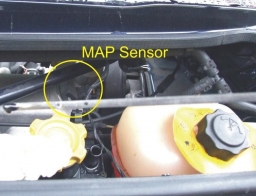- 3680 users
Pinned Items
Recent Activities
-
Thank you Matt for reporting back & trumpeting your success & why not. If you’ve come to car fettling later in life & you’ve taken the job full square on the nose & sorted it, you’ve started to cement a relationship with the car & folk on T-bar.
There are owners who hop on, ask all the questions, to which regular contributors turn their hard won knowledge to answer. This takes our time & research & having resolved their problem, off they go, without even pressing the thank you button.
And here you are contributing a “how to” on you’re first outing.
Great stuff.
MPost is under moderationStream item published successfully. Item will now be visible on your stream. -
Considering Bosch we’re the “patentees” of this type of sensor you can be sure it will be within tolerance. Unless it’s a Bocsh, who are a Chinese maker of poor quality rip-off stuff. That’s an untruth but could easily be correct.
Change the other sensor & run the system stinking hot a couple of times & you’ll be in with a very good chance.
Unless the cat’ has croaked.
MPost is under moderationStream item published successfully. Item will now be visible on your stream. -
The “amateur electrical work”, a pound to a penny will be the grafting on of the old connector on to a general purpose sensor.
I did some work quite recently where I amassed sensors from several types & makes of car, the characteristics are so close as to make you ask why such a price disparity.
I didn’t assess the dynamic characteristics of each by screwing them into the car, in turn & run it. Those tested gave similar results.
At the end of the day you’re looking for an MOT pass, the test is academic.
MPost is under moderationStream item published successfully. Item will now be visible on your stream. -
From your errors and emmision test result I am seeing that you have problems with pre-cat lambda sensor. I would change pre-cat lambda sensor for new one and retest. From what you described pre-cat lambda sensor was not chaged.Post is under moderationStream item published successfully. Item will now be visible on your stream.
-
Post is under moderationStream item published successfully. Item will now be visible on your stream.
-
I have used it both before (some time before) and after oil changes and to my ears anyway it did work and was was not detrimental, it was on information from Jon of Rough Luck, he advised its use as a means of cleaning the valve gallery's so co.ing...Post is under moderationStream item published successfully. Item will now be visible on your stream.
-
My 2004 TF 135 is a bit tappety when I start it up. I don't use the car as often as I should so maybe it is just the oil draining down. The tapping disappears as the engine warms up. As it has done 112,000 miles I'm thinking of using some valve lifter additive. Is it worth doing or is this stuff ineffectual? If I'm going to use it, is it best to put it in after an oil change or to put it in and run it for a while before the oil change?Post is under moderationStream item published successfully. Item will now be visible on your stream.
-
It is wrong to assume but presumably re programming the MEMS3 and thereby affecting the interaction with ring around the ignition switch has no effect on the “burglar alarm features”?
Yes, it is wrong to assume that. If passive immobilisation is removed from your engine ECU, that means you do not need your fob to start the engine. That also means somebody can break into your car by smashing window and hot wire your car and they are gone. Yes alarm should sound because opening door will triger alarm, but then just depends how quick they can hot wire your car and be gone.Post is under moderationStream item published successfully. Item will now be visible on your stream. -
One thing about all this pointless security bollocks, is that once someone would just break in and hotwire the car and be gone, but now since they’ve made cars hard to pinch so now the scumbags now resort to one of the following options: kill or maim you in a carjacking, kill or maim you whilst mugging you to get the keys in the car park, or kill or maim you whilst breaking into you house to steal the keys and anything else they fancy!
The young folk don’t bother learning the skills of the thieving trade like they used to.
So in the good ole days they just stole the car, now in these more secure times they get to kill you in the process of stealing your car….that’s progress….. my point is that cars are still getting stolen, only the methods now are more risky of the owner.
Locks and alarms only keep out honest people! The bad bastards always find a wayPost is under moderationStream item published successfully. Item will now be visible on your stream. -
Stream item published successfully. Item will now be visible on your stream.
There are no activities here yet







